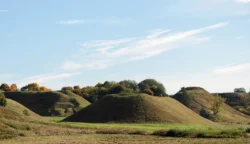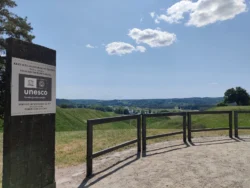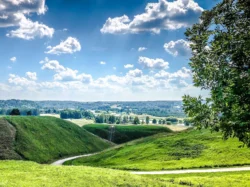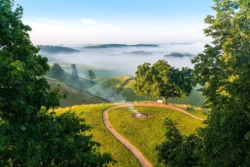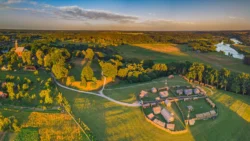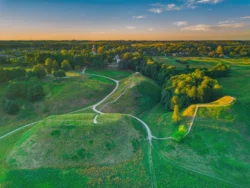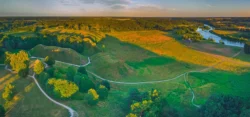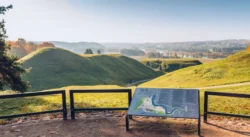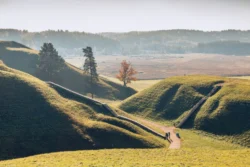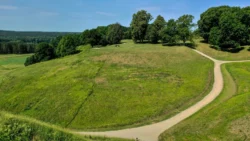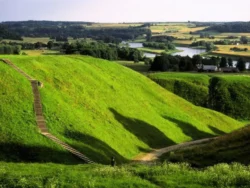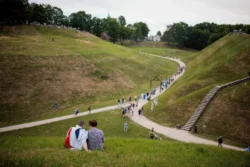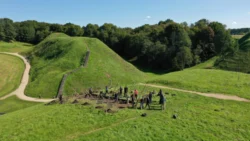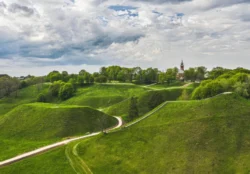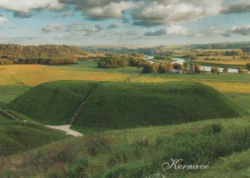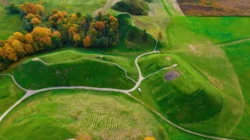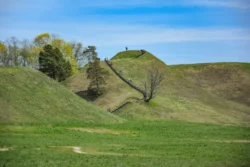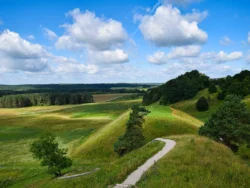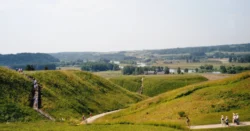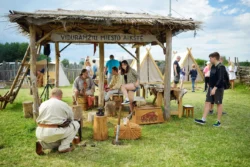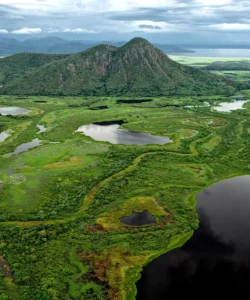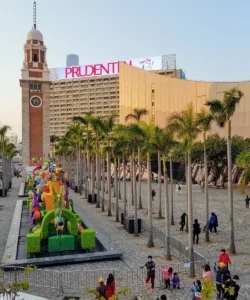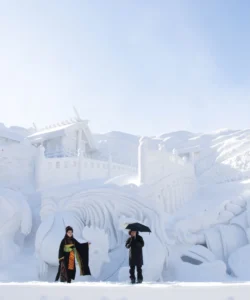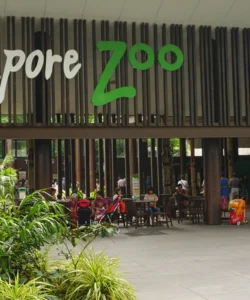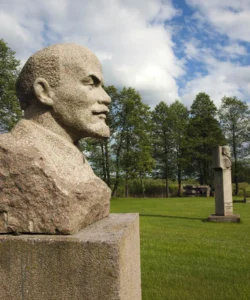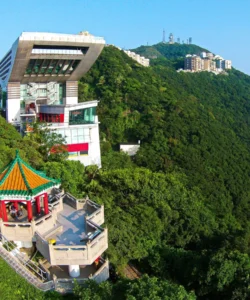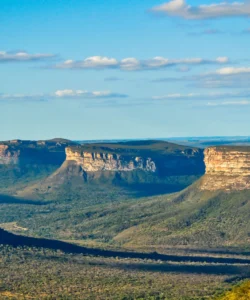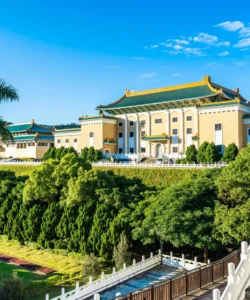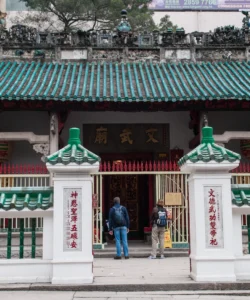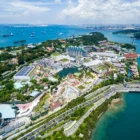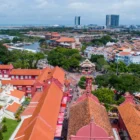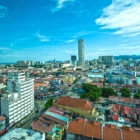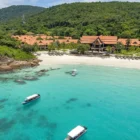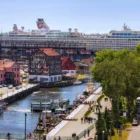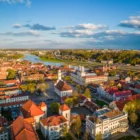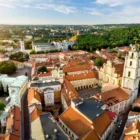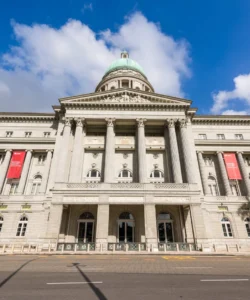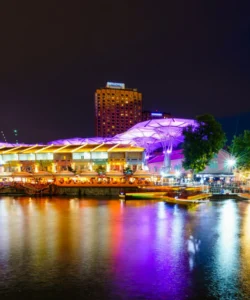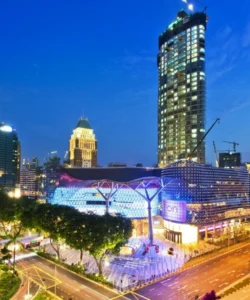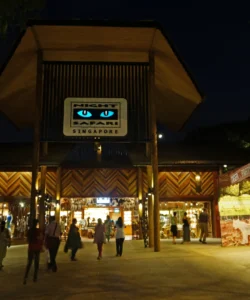The Kernavė Archaeological Site (Kernavės archeologinė vietovė), located on the right bank of the Neris River in southeastern Lithuania, is an exceptional testament to human settlement in the Baltic Sea region over a period of almost 11 millennia. This remarkable complex of archaeological remains, comprising hillforts, settlements, burial sites, and other cultural monuments, represents the last pagan capital of the Grand Duchy of Lithuania and provides unique insights into medieval urban planning and defensive systems. A UNESCO World Heritage site, Kernavė is a living cultural landscape that offers a profound journey through Lithuania’s ancient history, from the Paleolithic period to the Middle Ages.
Name: Kernavė Archaeological Site (Kernavės archeologinė vietovė)
Address: Kernavė, Širvintos District Municipality, Lithuania. It is located about 35 km (22 miles) northwest of Vilnius.
How to get there:
Reaching Kernavė Archaeological Site, involves a significant international journey to Europe, followed by domestic travel within Lithuania:
- From Vilnius to Kernavė:
- By Bus: Buses depart from Vilnius Bus Station to Kernavė. The journey takes approximately 45 minutes to 1 hour. This is the most common way to reach Kernavė.
- By Car/Taxi/Ride-hailing (e.g., Bolt/Uber): Driving from Vilnius to Kernavė takes about 30-40 minutes (approx. 35 km northwest of Vilnius). This offers the most flexibility for exploring the site.
- Organized Tour: Some tour operators in Vilnius offer half-day or full-day tours to Kernavė, often combining it with other nearby attractions.
- Within the Site: Kernavė Archaeological Site is best explored on foot. The main attractions are the hillforts, which require some walking up slopes.
Best Time to Visit:
Kernavė Archaeological Site is open year-round, but the best time for comfortable exploration and clear views is generally:
- Late Spring (May to early June): Pleasant temperatures, lush greenery, and blooming wildflowers.
- Summer (Mid-June to August): Warmest weather, ideal for walking and enjoying the river views. This is peak tourist season, but the site is large enough to absorb crowds. The Kernavė Archaelogical Days festival (usually in early July) is a major event, bringing history to life with medieval reenactments.
- Early Autumn (September to early October): Crisp air, beautiful fall foliage, and still pleasant temperatures, ideal for photography.
Winter (November to April) can be very cold and snowy, offering a serene, stark, and sometimes picturesque atmosphere, but with fewer outdoor activities.
Landscape and Architecture:
Kernavė Archaeological Site’s “architecture” is its preserved cultural landscape, marked by ancient hillforts and settlements, revealing layers of human history:
- Five Hillforts (Piliakalniai): The most prominent features are the five impressive hillforts (piliakalniai) – Lizdeika Hill, Mindaugas Throne Hill, Aukuro Hill, Kriaučiūnas Hill, and Pilies kalnas (Castle Hill). These natural hills were strategically modified by ancient inhabitants (reinforced with earth and timber defenses) to serve as defensive strongholds and settlements. They offer panoramic views of the Neris River valley.
- Neris River Valley: The site is situated in a picturesque valley carved by the Neris River, which provided a natural barrier and a vital transport route. The steep slopes of the valley contributed to the defensive capabilities of the hillforts.
- Archaeological Layers: The core “architecture” is largely subterranean – the remarkably preserved archaeological layers beneath the surface. These layers contain evidence of continuous human occupation from the Paleolithic era (c. 9th millennium BCE) to the Middle Ages (13th-14th centuries CE), including remnants of former towns, settlements, burial grounds, and workshop sites. The low-lying former town of Kernavė (below the hillforts) is particularly well-preserved due to being covered by alluvium and subsequent minimal development.
- Wooden Footpaths and Observation Decks: To protect the fragile archaeological remains and provide visitor access, well-maintained wooden boardwalks and observation decks guide visitors through the site.
- Kernavė Archaeological Museum: A modern museum (located near the main entrance) that displays fascinating archaeological finds from the site, including tools, pottery, jewelry, and weaponry, and provides context for the historical periods.
- Reconstructed Buildings (Limited): While most of the structures are underground, the museum sometimes includes small-scale reconstructions or interpretive displays of ancient dwellings.
- Church of St. Mary of Scapular: A relatively modern (early 20th century) brick church stands on the site of earlier churches, overlooking the hillforts, adding a contemporary landmark to the ancient landscape.
- Sacred Valley: The entire area holds a deep spiritual significance as the legendary first capital and a key center of the ancient Lithuanian pagan faith, with mentions of sacred groves and altars.
What makes it famous:
Kernavė Archaeological Site is famous for:
- UNESCO World Heritage Site: Recognized for its outstanding universal value as an exceptional testimony to ancient human settlements and the processes of cultural evolution in the Baltic region, and for preserving evidence of the Grand Duchy of Lithuania’s ancient capital.
- Long History of Human Occupation: It boasts almost 11 millennia of continuous human occupation, from the Stone Age to the Middle Ages, making it an incredibly rich archaeological time capsule.
- Last Pagan Capital: It served as the capital of the pagan Grand Duchy of Lithuania in the 13th-14th centuries, before the country’s Christianization. This status imbues it with profound historical and cultural significance related to Lithuania’s unique pre-Christian past.
- Five Hillforts: The impressive cluster of five strategically located hillforts overlooking the river valley is a unique and visually striking feature, showcasing ancient defensive ingenuity.
- Archaeological Significance: The deep and remarkably preserved archaeological layers provide invaluable insights into the daily life, social structures, and cultural practices of various ancient communities.
- Living Cultural Landscape: It is not merely a site of ruins but a “cultural landscape” where natural beauty, historical remains, and ongoing archaeological research merge.
- Kernavė Archaeological Days: The annual festival (early July) brings the site to life with medieval reenactments, crafts, and battles, attracting thousands of visitors.
- Pagan Heritage: The site is a significant location for those interested in ancient pagan beliefs and rituals, with elements of these traditions subtly integrated into its landscape and local lore.
Differences from some other wonders:
Kernavė Archaeological Site distinguishes itself from other archaeological sites, ancient capitals, or cultural landscapes in several key ways:
- Combined Chronological Depth and Cultural Layering: Unlike many archaeological sites focusing on a single period or culture (e.g., Roman ruins, Egyptian pyramids), Kernavė offers an uninterrupted archaeological record spanning 11 millennia (from Paleolithic hunter-gatherers to medieval towns). This incredible chronological depth of human adaptation in one place is exceptionally rare.
- Last Pagan Capital of a European State: Its unique status as the last pagan capital of the Grand Duchy of Lithuania gives it a profound historical and cultural distinctiveness in the European context, connecting it directly to a pre-Christian era of statehood.
- Archaeology of a “Lost” Medieval Town: The low-lying settlement of Kernavė, which was largely abandoned and covered by alluvium after the Teutonic Knights’ attacks, means its medieval townscape is remarkably preserved underground, offering a unique “time capsule” of medieval urban planning that has not been built over in subsequent centuries. This preservation of an intact medieval town below ground is very rare.
- Hillfort Cluster as a Defining Feature: The cluster of five impressive hillforts in close proximity, strategically positioned along the river valley, is a specific and visually striking aspect of Kernavė, highlighting ancient defensive planning in a unique way.
- Cultural Landscape Concept: Its UNESCO designation explicitly highlights it as a “cultural landscape,” emphasizing the dynamic interaction between human activity (hillfort construction, settlement, agriculture) and the natural environment (river, valley, hills) over millennia, rather than focusing on a single monumental structure.
- Less Overtly Reconstructed (Archaeological Focus): Compared to sites with extensive reconstructions (e.g., Trakai Island Castle) or prominent standing ruins, Kernavė focuses more on the archaeological evidence and the landscape itself, relying on interpretive displays rather than large-scale reconstructions to convey its past.
In essence, Kernavė Archaeological Site is a profound and unique wonder, a vast open-air museum that narrates the epic story of human civilization in the Baltic region, showcasing a remarkably preserved past and its profound connection to Lithuania’s enduring pagan heritage.


